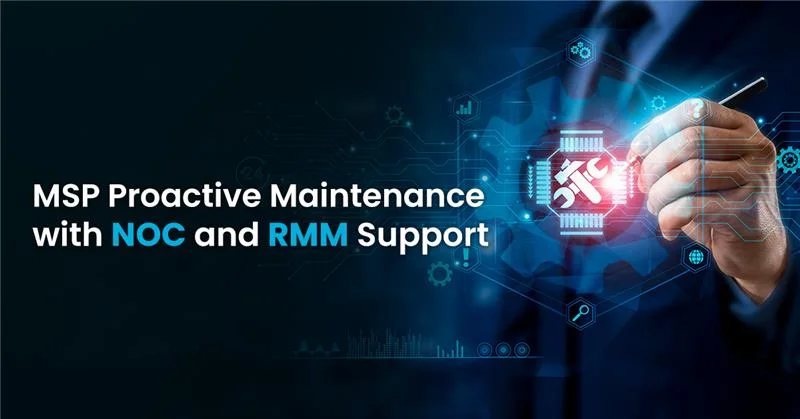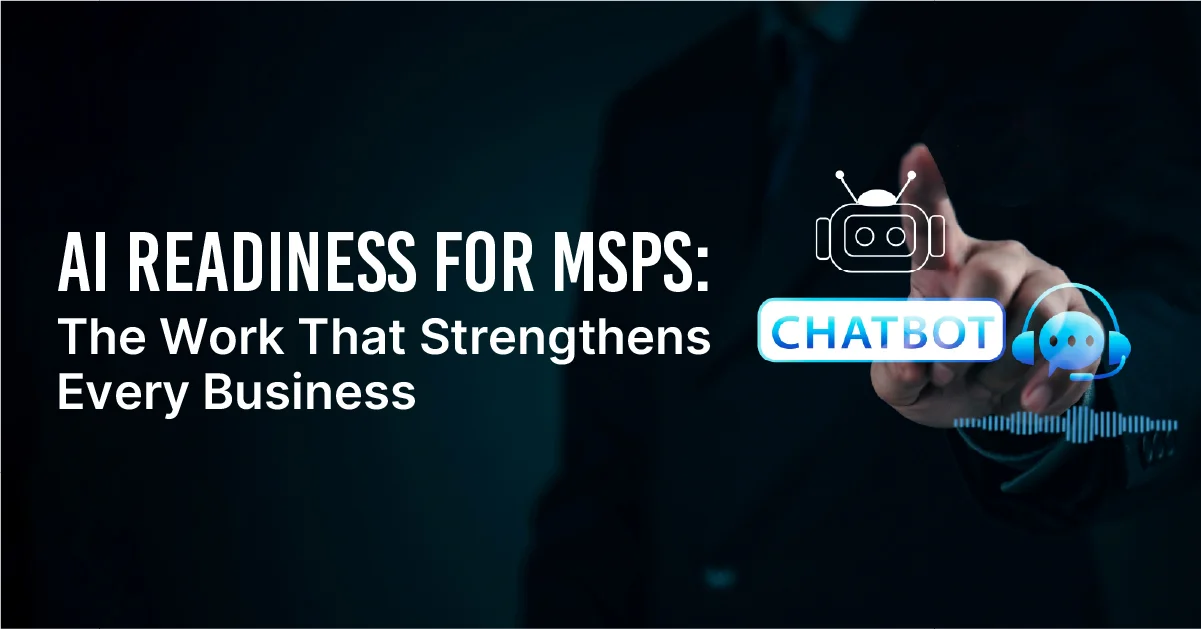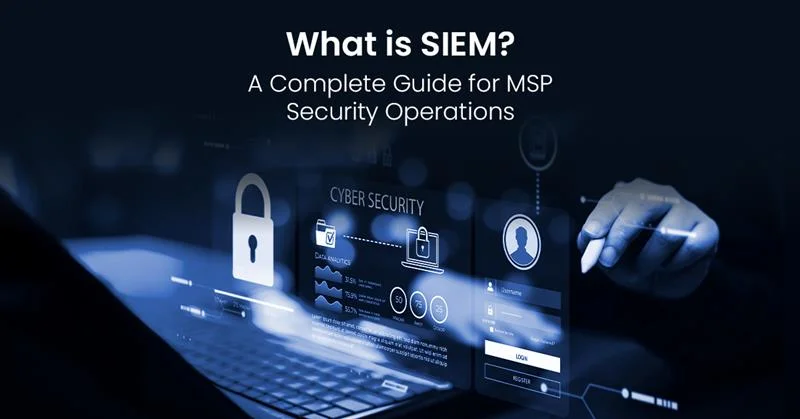Here’s the truth nobody wants to admit: most MSPs are still playing firefighter instead of fire prevention specialist. You’re running from one emergency to another, patching holes after water’s already flooding through, and wondering why clients don’t see the value in your monthly retainer.
The problem isn’t your technical skills. It’s your approach.
MSP proactive maintenance changes the entire game. Instead of waiting for servers to crash at 3 AM, you’re catching issues at 3 PM when they’re just tiny blips on a monitoring dashboard. Instead of explaining downtime to furious clients, you’re sending reports showing the 47 problems you prevented last month.
Let’s talk about how NOC support for MSPs and RMM support for MSPs can transform your business from reactive chaos to proactive excellence.
What is MSP Proactive Maintenance?
MSP proactive maintenance is the difference between changing your car’s oil every 3,000 miles versus waiting until the engine seizes on the highway. One approach is scheduled, predictable, and cheap. The other is catastrophic, expensive, and completely avoidable.
In practical terms, MSP proactive maintenance means continuously monitoring client systems, identifying potential failures before they happen, and fixing issues while they’re still minor inconveniences rather than major disasters.
Understanding Proactive vs. Reactive MSP Approaches
The reactive approach looks like this: Client calls screaming that email’s down. You drop everything, log in remotely, discover the Exchange server ran out of disk space, scramble to clear logs, restore service after 4 hours of downtime. Client’s unhappy. Your team’s exhausted. Nobody wins.
The proactive maintenance version: Your monitoring system alerts you that the Exchange server will hit capacity in 10 days. You schedule maintenance during off-hours, expand storage, document the change. Client never knows there was a problem because there wasn’t one. That’s the power of MSP system monitoring done right.
According to recent industry data, firms using MSPs reported a 27% decrease in system downtime, and that’s directly tied to proactive maintenance strategies catching issues early.
Core Elements of Proactive Maintenance for MSPs
Effective MSP proactive maintenance isn’t a single tool or tactic. It’s a framework built on four pillars:
- Continuous monitoring: Real-time visibility into every critical system metric
- Predictive analytics: Identifying trends that signal upcoming failures
- Scheduled interventions: Patching, updating, and optimizing before problems emerge
- Automated remediation: Fixing common issues without human intervention
Think of it as installing security cameras, motion sensors, and smart locks rather than just hiring a guard to patrol after the break-in.
Why MSPs Need NOC Support for Proactive Maintenance
Here’s the uncomfortable reality: you can’t monitor systems 24/7/365 without burning out your team or hiring three shifts of technicians. Even if you could afford the headcount, finding qualified people willing to work overnight is nearly impossible in today’s market.
That’s where NOC support for MSPs becomes your secret weapon.
How NOC Support for MSPs Enhances System Monitoring
A Network Operations Center provides round-the-clock eyes on your clients’ infrastructure. When that disk space alert fires at 2:47 AM, NOC technicians are already investigating before your on-call phone even rings.
Real situation from an MSP managing 50+ clients: They were drowning in 500+ daily notifications across their client base. Critical security breach happened at 2 AM. Nobody noticed until 8 AM when staff arrived. The breach had been spreading for six hours.
After implementing NOC support with intelligent alert filtering and escalation protocols, they reduced noise by 80%. Critical incidents now reach on-call technicians within 2 minutes, regardless of time or day. That’s not just better service—that’s the difference between a contained incident and a company-ending data breach.
Benefits of Outsourcing NOC Functions
Let’s talk numbers. Hiring three full-time NOC technicians to provide 24/7 coverage costs roughly $180,000-240,000 annually plus benefits, training, and management overhead. Outsourced NOC support for MSPs runs $2,000-5,000 monthly for most small to mid-sized providers.
Beyond cost, you’re gaining:
- Access to specialized expertise without training costs
- Scalability that grows with your client base
- Redundancy when team members take vacation or leave
- Documented processes that ensure consistency
Your clients get enterprise-level MSP system monitoring while you maintain healthy profit margins. Everyone wins.
RMM Support for MSPs: The Backbone of Proactive Maintenance
If NOC support is the nervous system detecting problems, RMM tools are the hands that fix them. Remote Monitoring and Management platforms are the foundation of modern MSP proactive maintenance.
RMM support for MSPs transforms how you deliver services. According to research, RMM provides cost savings up to 30% through automation and efficiency gains.
Essential RMM Capabilities for MSP System Monitoring
Modern RMM platforms do the heavy lifting your technicians shouldn’t be doing manually:
- Automated patch management: Deploy updates across 500 workstations while you sleep
- Remote diagnostics: Troubleshoot without scheduling site visits
- Asset inventory: Know every device, license, and warranty expiration date
- Script automation: Eliminate repetitive tasks that waste billable hours
Real scenario: Small MSP was spending 15 hours weekly manually patching 200 workstations across 8 clients. Security gaps were appearing. SLA deadlines were being missed. Stress was mounting.
After implementing proper RMM automation with scheduled patching policies, manual effort dropped to 2 hours weekly. Patch compliance hit 99.5% within 48 hours of release. The MSP redirected those saved hours to revenue-generating activities. This is what proactive maintenance delivers when backed by solid RMM support for MSPs.
How RMM Tools Enable Predictive Maintenance
The real magic happens when RMM platforms collect enough historical data to predict failures:
- Disk space trends showing you’ll hit capacity in 14 days
- Memory usage patterns indicating a memory leak
- CPU spikes suggesting hardware degradation or malware
- Network bandwidth consumption revealing shadow IT or security issues
You’re no longer reacting to fires. You’re preventing them based on data, not gut feeling. That’s sophisticated MSP proactive maintenance that justifies premium pricing.
Integrating MSSP Security Operations with Proactive Maintenance
Security used to be a separate conversation from maintenance. Not anymore. The line between keeping systems running and keeping them secure has completely disappeared.
MSSP security operations and MSP proactive maintenance are now inseparable. When ransomware can encrypt an entire network in 45 minutes, you can’t afford to treat security as an afterthought.
The Convergence of MSP and MSSP Services
Modern threats don’t wait for business hours. They don’t care about your maintenance windows. Over 317 million ransomware attempts were recorded in 2024, with average recovery costs reaching $2.73 million. These numbers should terrify every MSP.
Here’s a nightmare scenario that actually happened: MSP client suffered ransomware attack because antivirus definitions were outdated for 18 days. Backup system had failed silently 3 weeks prior. Nobody noticed until encrypted files appeared everywhere.
With integrated MSSP security operations and RMM monitoring, backup failures trigger alerts within 24 hours. Antivirus definitions never lag more than a day. Endpoint Detection and Response (EDR) with behavioral analysis catches threats that signature-based tools miss.
That’s proactive maintenance protecting not just uptime, but business survival.
Security-Focused Proactive Maintenance Activities
Your MSP proactive maintenance schedule should include:
- Weekly vulnerability scans with automated remediation workflows
- Prioritized security patching within 48 hours of release
- Compliance monitoring for HIPAA, PCI-DSS, or GDPR requirements
- Configuration audits catching security drift before auditors do
These aren’t separate services. They’re core components of comprehensive MSP system monitoring that protects your clients and your reputation.
Key Benefits of MSP Proactive Maintenance
Let’s cut through the marketing fluff and talk real benefits:
- Minimized Downtime: Industry data shows downtime can cost $9,000 per minute. Proactive maintenance catches issues before they cause outages. Your clients stay productive. You stay profitable.
- Predictable Budgets: Fixed monthly fees beat unpredictable emergency invoices. Clients love budget certainty. You love predictable recurring revenue.
- Extended Equipment Life: Regular maintenance makes hardware last 1-2 years longer. That’s real money saved and fewer emergency replacement conversations.
- Higher Client Satisfaction: Fewer disruptions mean happier users. Renewal rates improve. Referrals increase. Your reputation grows.
- Better Profit Margins: Efficient resource allocation means your team spends time on strategic projects, not emergency firefighting. That’s how you scale profitably.
- Competitive Advantage: While competitors are still doing break-fix, you’re delivering enterprise-grade proactive maintenance to businesses of all sizes.
How to Implement Effective Proactive Maintenance Strategies
Theory’s great. Implementation is where most MSPs struggle. Here’s how to actually make MSP proactive maintenance work in your business.
Building Your MSP System Monitoring Framework
Start with documentation and standards:
- Establish baseline performance metrics for common systems
- Define monitoring thresholds that balance alerting with noise reduction
- Create standardized maintenance schedules by system type
- Document escalation procedures so everyone knows their role
Real problem: New MSP struggled with inconsistent service delivery. Different technicians applied different standards. Clients were confused. Tickets escalated unnecessarily.
Solution: They documented a proactive maintenance framework with standardized checklists, automated RMM policies, and monthly client review meetings. Consistency scores jumped from 62% to 94% within three months. Client retention improved immediately.
Selecting the Right RMM and NOC Support Partners
Not all tools are created equal. When evaluating RMM support for MSPs, look for:
- Automation capabilities that actually work reliably
- Integration with your PSA for seamless ticketing
- Reporting that clients understand without technical translation
- Scalability that won’t require platform changes as you grow
For NOC support partners, ask about:
- Response times to critical alerts
- Escalation procedures for emergencies
- Training and certification of their technicians
- Experience with your specific technology stack
The right partners amplify your capabilities. The wrong ones create more problems than they solve.
Transform Your MSP with IT By Design’s RMM Services
The difference between thriving MSPs and struggling ones comes down to one thing: proactive maintenance executed consistently and professionally.
IT By Design’s RMM Services delivers the complete solution:
- White-label NOC support with 24/7/365 monitoring
- Enterprise-grade RMM tools with predictive analytics
- Integrated security operations for comprehensive protection
- Proven methodologies that boost client retention by 23%
MSPs using our framework achieve:
- 40% fewer reactive tickets
- 99.95% uptime across portfolios
- 35% revenue increase within 12 months
Ready to make the shift?
Schedule a call with us today to know IT By Design’s RMM framework helped hundreds of MSPs transition from reactive firefighting to proactive excellence.
FAQs (Frequently Asked Questions)
Q: What is the difference between proactive and reactive MSP maintenance?
A: Proactive maintenance prevents problems through continuous monitoring and scheduled interventions before issues impact users, while reactive maintenance only addresses problems after they cause disruptions and downtime.
Q: How much does proactive maintenance reduce downtime for MSPs?
A: MSPs implementing comprehensive proactive maintenance typically reduce unplanned downtime by 60-85%, with many achieving 99.9% uptime SLAs through effective monitoring and intervention.
Q: Do small MSPs need NOC support for proactive maintenance?
A: Yes, even small MSPs benefit significantly from NOC support since 24/7 monitoring capabilities are expensive to staff internally, and outsourced solutions provide enterprise-level monitoring at a fraction of in-house costs.
Q: What RMM features are most important for proactive maintenance?
A: Critical RMM features include automated patch management, real-time monitoring with customizable alerts, remote access capabilities, comprehensive asset tracking, and robust reporting for trend analysis.
Q: How does MSSP security operations integrate with MSP maintenance?
A: MSSP security operations enhance proactive maintenance by adding security-focused monitoring, threat detection, vulnerability management, and compliance tracking alongside traditional performance and availability monitoring.








